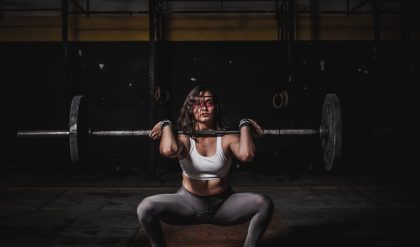Upper body workouts are among the most favored by bodybuilders, focusing on developing essential muscles such as the chest, back, shoulders, triceps, and biceps. Among these, biceps exercises are especially popular. A staple in any effective upper-body training plan is the barbell curl—a tried-and-true exercise that strengthens and defines the biceps while offering additional benefits for overall arm development.
Although barbell curls are often included in workout routines, mistakes in form and execution can hinder results and increase the risk of injury. Let’s dive deeper into this iconic exercise, its benefits, variations, and how to perform it with precision.
What Is a Barbell Curl?
The barbell curl is a foundational strength training exercise designed to target and develop the biceps brachii—the large, prominent muscle on the front of the upper arm. By engaging in this exercise, practitioners can enhance arm strength, achieve muscle hypertrophy, and improve the overall aesthetics of their biceps.
The movement involves controlled elbow flexion during the upward (concentric) phase and elbow extension during the downward (eccentric) phase. It is commonly performed using a straight barbell, but variations with dumbbells, EZ bars, or cables are also popular.
For more fitness guides and tips, explore our Fitness category.
Muscles Worked During Barbell Curls
While the primary target is the biceps brachii, barbell curls also engage other supporting muscles, including:
- Brachialis: Located underneath the biceps brachii, contributing to elbow flexion.
- Brachioradialis: A forearm muscle assisting in elbow flexion, particularly during pronated grip variations.
By involving these additional muscles, barbell curls contribute to well-rounded arm strength and stability.
Benefits of Barbell Curls
Adding barbell curls to your workout routine offers numerous advantages beyond building stronger biceps. These benefits include:
- Enhanced Arm Strength: Boost your capacity to handle heavier weights in compound exercises like rows or pull-ups.
- Improved Elbow Stability: Strengthened biceps support the joint, reducing the risk of injuries.
- Better Body Awareness: Controlled movements improve coordination and form.
- Versatility in Everyday Tasks: Stronger arms make lifting, carrying, and pulling easier.
- Aesthetic Gains: Defined and muscular arms are a standout feature in upper-body aesthetics.
For a complete guide on effective upper-body exercises, check out our post on weightlifting for upper body strength.
Common Mistakes in Barbell Curls
Avoiding poor form is critical to prevent injuries and maximize gains. Here are some common mistakes to steer clear of:
- Lifting Too Much Weight: Overloading compromises form and increases injury risk.
- Elbow Flare: Keep elbows close to your body throughout the movement.
- Incomplete Range of Motion: Perform full biceps contractions by extending and flexing completely.
- Using Momentum: Avoid swinging your torso or relying on shoulder movement to lift the barbell.
- Rushing the Reps: Execute the movement slowly and with control, especially during the eccentric phase.
By addressing these errors, you’ll maximize the effectiveness of each repetition.
Variations of the Barbell Curl
The barbell curl offers plenty of flexibility for variation, allowing you to adjust the stimulus to suit your fitness goals:
- Grip Variations:
- Supinated Grip (Palm-Up): Traditional curl position.
- Pronated Grip (Palm-Down): Engages forearms and brachioradialis.
- Close Grip: Focuses on the inner biceps.
- Wide Grip: Targets the outer biceps.
- Bar Type:
- Straight Barbell: Classic and widely used.
- EZ Curl Bar: Reduces wrist strain during curling motions.
- Advanced Techniques:
- Drop Sets: Reduce weight progressively without rest to maximize hypertrophy.
- Rest-Pause: Pause briefly between reps to increase intensity.
For those seeking a broader understanding of workout variations, read our article on Fartlek training for flexibility.
How to Perform Barbell Curls Correctly
To ensure optimal results and safety, follow these steps:
- Setup:
- Choose a suitable weight for your fitness level.
- Stand upright with feet shoulder-width apart and knees slightly bent.
- Grip:
- Hold the barbell with palms facing upward (supinated grip).
- Hands should be about shoulder-width apart.
- Starting Position:
- Arms should be fully extended, with the barbell resting in front of your thighs.
- Movement:
- Keep your elbows close to your body.
- Lift the barbell toward your chest by flexing your elbows.
- Lower the barbell slowly and with control back to the starting position.
- Tips for Precision:
- Avoid shoulder movement during the lift.
- Maintain a steady pace throughout the motion.
- Focus on contracting the biceps during the upward phase.
For a complete step-by-step guide, explore our article on barbell curls.
Frequently Asked Questions
1. Can women perform barbell curls?
Absolutely! Barbell curls are suitable for anyone looking to build arm strength and improve muscle tone.
2. How often should I include barbell curls in my workout?
Incorporate them 2–3 times a week, depending on your overall training plan and goals.
3. Is it better to use a straight bar or an EZ curl bar?
Both are effective, but the EZ curl bar may be more comfortable for those with wrist discomfort.
Final Thoughts
The barbell curl is a timeless exercise that plays a vital role in any upper-body training regimen. By focusing on form, incorporating variations, and avoiding common mistakes, you can achieve impressive biceps development and improved arm strength. Whether you’re a beginner or an experienced athlete, barbell curls are a must-have in your workout arsenal.
For more fitness tips and expert advice, visit our Fitness category or explore related articles like the benefits of treadmill running.
Connect With Us
For inquiries, contact us via email at support@bestsportsdaily.com or through our Contact page. Follow us on Facebook or reach us on WhatsApp at (+84) 384443553 for updates and support.


